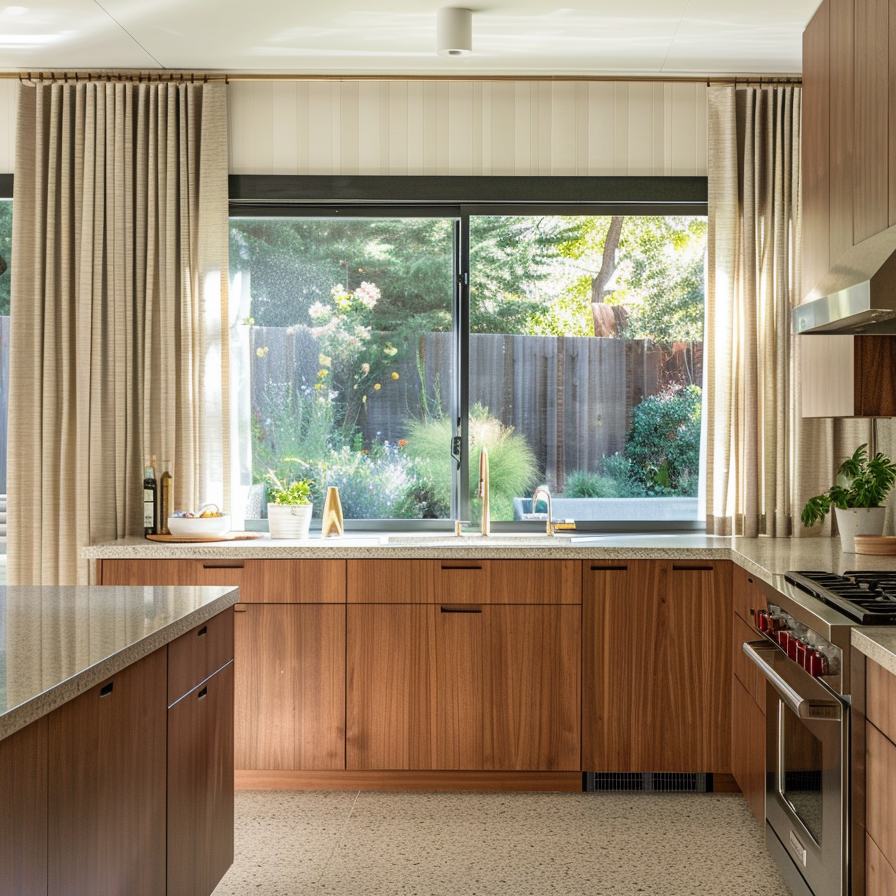Some rooms are easy when it comes to curtains. The kitchen isn’t one of them.
There’s steam, spills, changing light, and constant motion. That’s why picking the right kitchen window treatments is less about design theory and more about what actually works when you're cooking, cleaning, and running through the day.

Not Every Curtain Works in a Kitchen—Here’s Why
Let’s be honest: not all fabrics can handle the mess. Lightweight synthetics attract grease and dust, and thick, heavy curtains too close to heat or moisture can warp or become a hazard.
Think about where your window sits. Is it above the sink? Near the stove? Tucked in a breakfast nook? If your curtain is in a high-splash zone, you’ll want something that’s easy to clean and unlikely to stain. Natural fibers like cotton or linen blends work well, but only if they’re washable and breathable. Bonus points if they’re pre-shrunk and machine-friendly.
Most people skip this step. They go with what looks nice. But function comes first here.
So… Can You Actually Use Floor-Length Curtains?

At first, long curtains in a kitchen sound like a bad idea. But in larger spaces or where the kitchen opens into a dining area, Floor Length Curtains can actually work well. They soften the hard surfaces and create some continuity with the rest of the home.
They’re especially effective on tall windows or glass doors leading to a patio or backyard. The key is placement. Keep them far from splatter zones and out of the direct cooking path. And make sure they're washable.
Choose fabrics that drape nicely but aren’t too heavy—think medium-weight cotton, linen blends, or performance materials designed to resist moisture and stains. Lined panels can offer just the right amount of body without making the room feel too formal.
Pinch Pleat? Sounds Formal, But It Works
You wouldn’t think Pinch Pleat Curtains belong in a kitchen. They seem tailored, maybe too put-together. But in breakfast nooks or smaller windows where neatness matters, they make sense. They hang straight, don’t twist up, and feel more intentional than basic rod-pocket panels.
If your kitchen leans traditional—or even if it doesn’t—they bring order without overcomplicating the space.
What About Light and Privacy?
This one depends on the window. If the kitchen faces a wall or backyard, privacy might not matter much. But if neighbors can see in, some light-filtering curtain panels or café-style coverings do the job without making the room feel dark.

Most people want sunlight during the day and softness in the evening. A layered setup can give you both. No one wants blackout curtains in the kitchen—but a little diffusion goes a long way.
Café curtains or light-filtering panels are a great solution. They provide coverage without blocking all the sunlight, making the room feel open and bright even when the curtains are drawn.
Layering can be a smart strategy too: try a sheer inner layer with a more opaque outer curtain. During the day, you get filtered light; in the evening, you get a little extra privacy. It’s all about flexibility.
And no—no one wants blackout curtains in the kitchen. But subtle diffusion can soften harsh light and give the whole space a more finished, welcoming feel.
One Final Note (Most People Miss This)
Don’t forget how often the window actually gets used. If it opens for ventilation, skip anything heavy or floor-length nearby. If it never opens, you’ve got more options.
Good kitchen window treatments are about rhythm. The way light moves, how often the area gets touched, and whether you actually notice the fabric when you walk in.
If it looks right but makes life harder, it’s the wrong pick.

